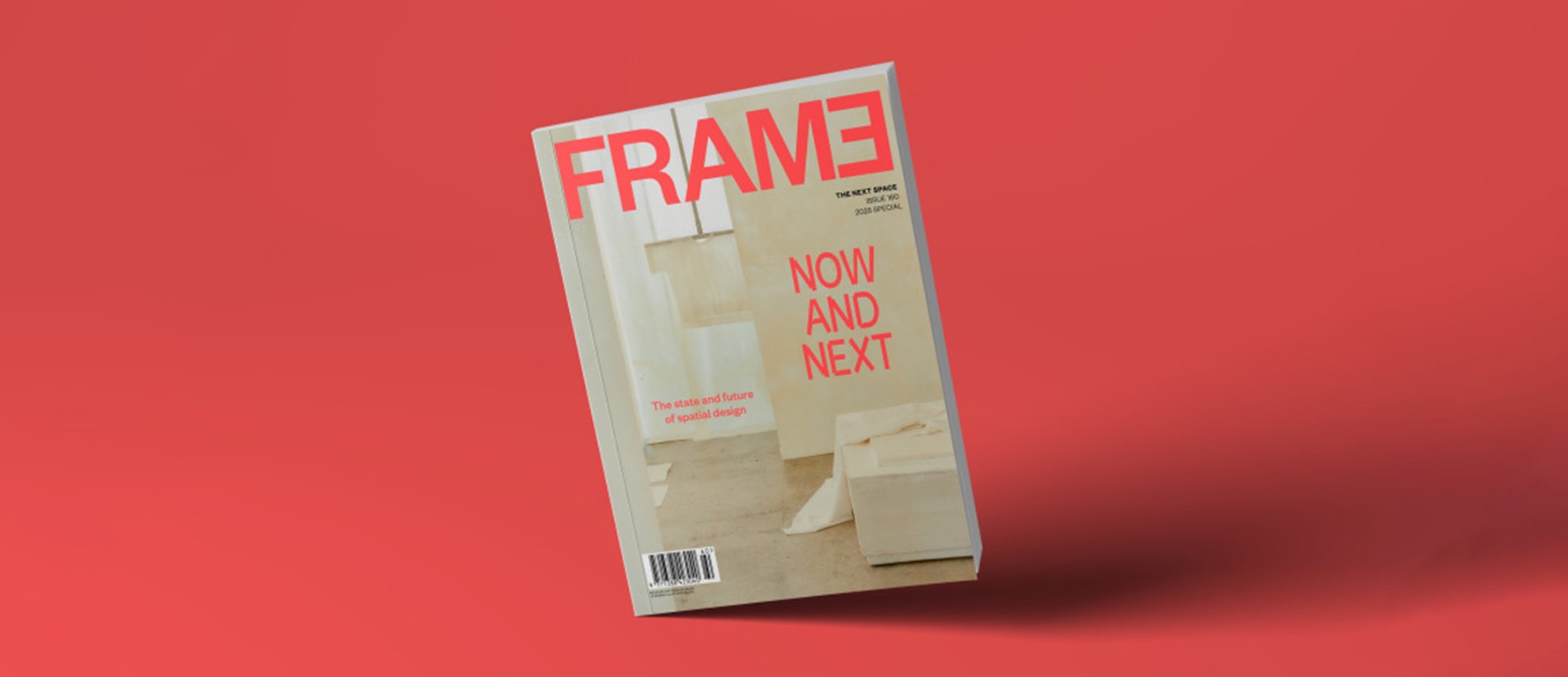
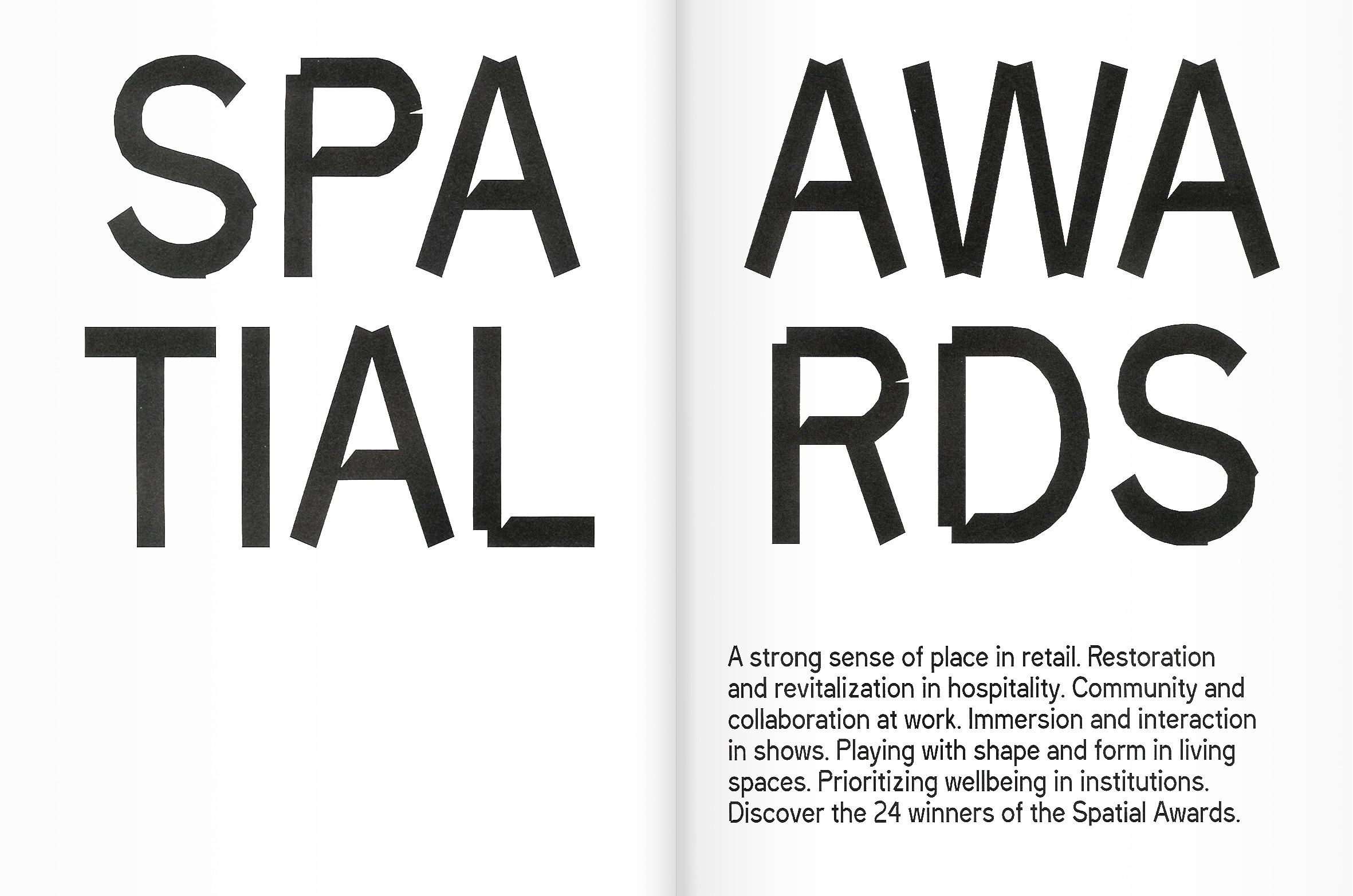
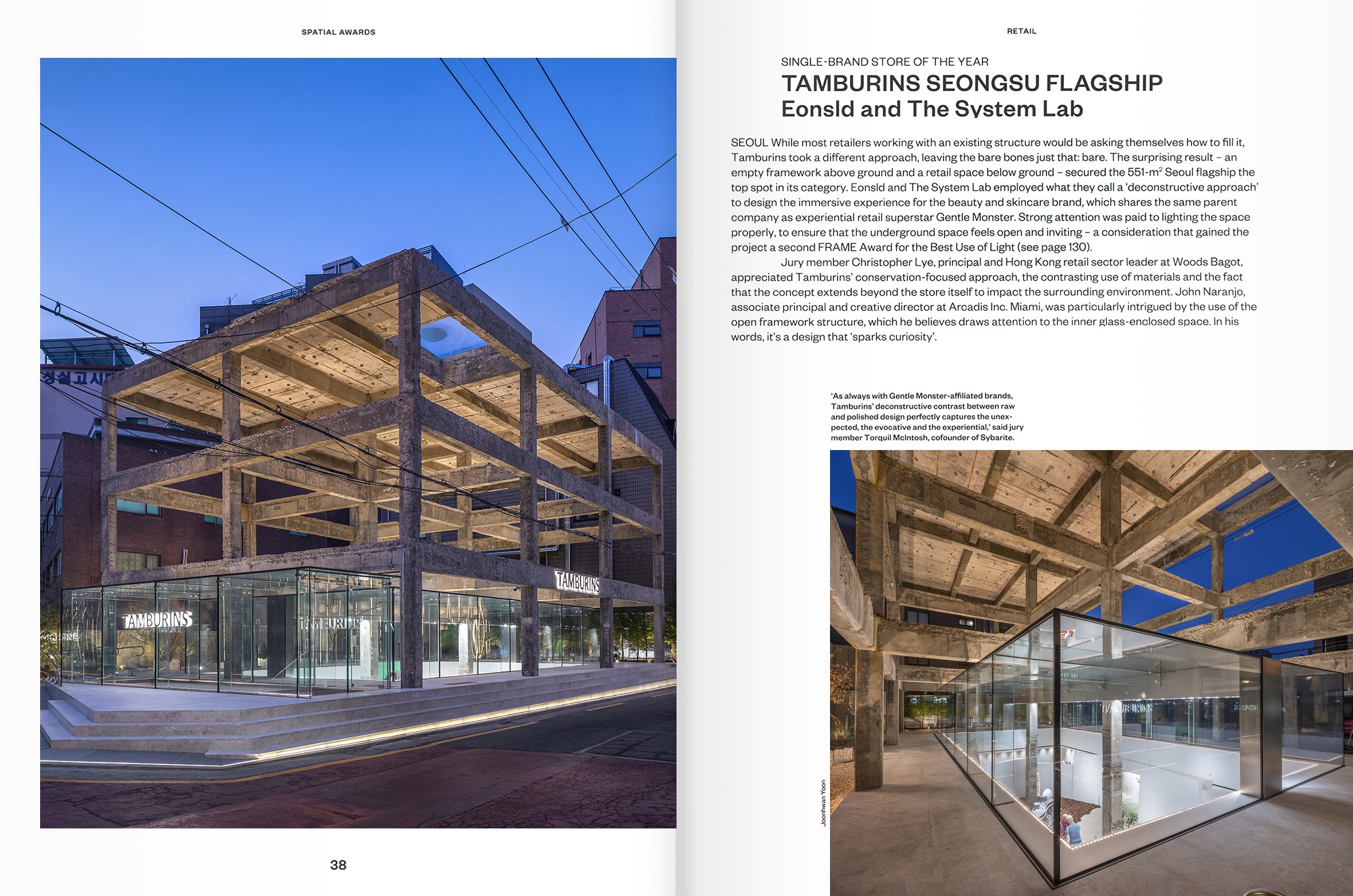
In her editorial for our newly released 2025 Special Issue, our editor in chief Floor Kuitert shares some of the key takeaways from last year’s FRAME Awards winners and jury deliberations.
In October last year, I travelled to Hong Kong for the FRAME Awards Grand Finale, which took place at the Herzog & de Meuron and Studio Farrells-designed M+ Museum in the city’s still-developing cultural quarter, West Kowloon. One of my first observations of the location was that this seems to be one of those institutional buildings that are truly accessible to the public, even if you’re not there to visit the exhibitions. During our first site visit in the afternoon, children on scooters enjoyed the shielded areas that are an integrated yet open part of the museum, while early the next morning, a group of women used the ‘grand stair plaza’ for a tai chi session.
The value of such public functions was a central theme in the grand jury session for the Institutional Awards, the winners of which – alongside those from our Spatial, Executional, Product and Honorary categories – are featured in this special issue. Jury member Sneha Divias, founder of Sneha Divias Atelier, emphasized that institutions must reflect their context, both in terms of place and people. ‘Usually, these buildings come at a large scale,’ she pointed out. ‘So, thinking about the human scale when you are creating these buildings is very important.’
That human-centric approach emerged as a recurring answer from our jurors when asked where spatial design across sectors should be heading. Their discussions extended to addressing what Yan Pan, cofounder and chief architect of SpActrum, referred to as the ‘social state around projects’: the societal, cultural, economic and political conditions that surround and influence, and should inform, architectural endeavours.
Beyond social sustainability, environmental considerations were consistently highlighted during deliberations. Unsurprisingly, given that sustainability is one of the four FRAME Awards judging criteria. However, the grand jury occasionally grappled with the term, which has become overused in the design industry’s marketing jargon. Pan expressed concern that sustainability has become something of a trend. A commercial tool, even. ‘Sustainability can be objective,’ he said, ‘but in design comments nowadays it has become very subjective.’ David T’Kint, founder of DTK Studio, echoed this sentiment, warning that ‘the word sustainability is losing its credibility’. Jason Immaraju, SVP and executive design director at NVE Experience Agency, referred to this phenomenon as ‘lip service’, but was encouraged to see submissions ‘that had a more thoughtful take on sustainability’. Elvira Muñoz, director of interiors and EMEA interior design practice leader at AECOM, stressed that ‘Sustainability is not a trend. It cannot be a trend. It has to be at the heart of what we do. We need to be obsessed with circulation, restoration and renovation.’
Another shared opinion among the jury members was the need for playfulness and joyfulness in the design of our future spaces – something they felt was occasionally missing from the Awards submissions. Jurors in the Shows category debated whether there might be a shift away from what Suvi Saloniemi, head of exhibitions at the Museum of Finnish Architecture and Design Museum, called ‘doomsday aesthetics’ – as seen in some recent shows from Balenciaga, for example – towards more cheerful and optimistic expressions. Hosting the deliberation, FRAME’s then head of digital Lauren Morris-Jansen noted that this ‘escapist shift’ is already underway, adding: ‘I think that is a very conscious shift towards saying, “Hey, we know everybody is fatigued by this onslaught of terrible news, so can we at least make our spaces places of rejuvenation and energy?”.’ Gerrit Vos, founder of Workshop of Wonders, was also looking for a sense of adventure. While he appreciated the move towards creating more enduring, long-lasting designs, he observed that ‘a sense of lightness, adventure and playfulness’ was somewhat missing, adding: ‘I think we are in a period of quite seriousness, and it doesn’t always lead to quality of life.’
Inspired by the jury’s discussions on industry trends, our in-house editorial team and contributing editors have begun conversations about developments in some of the core sectors FRAME reports on – retail, hospitality and work. The key takeaways from these conversations are published in this issue as well. Together with our reports on the FRAME Awards winners, they aim to analyse the current state of spatial design – and help you navigate its future.
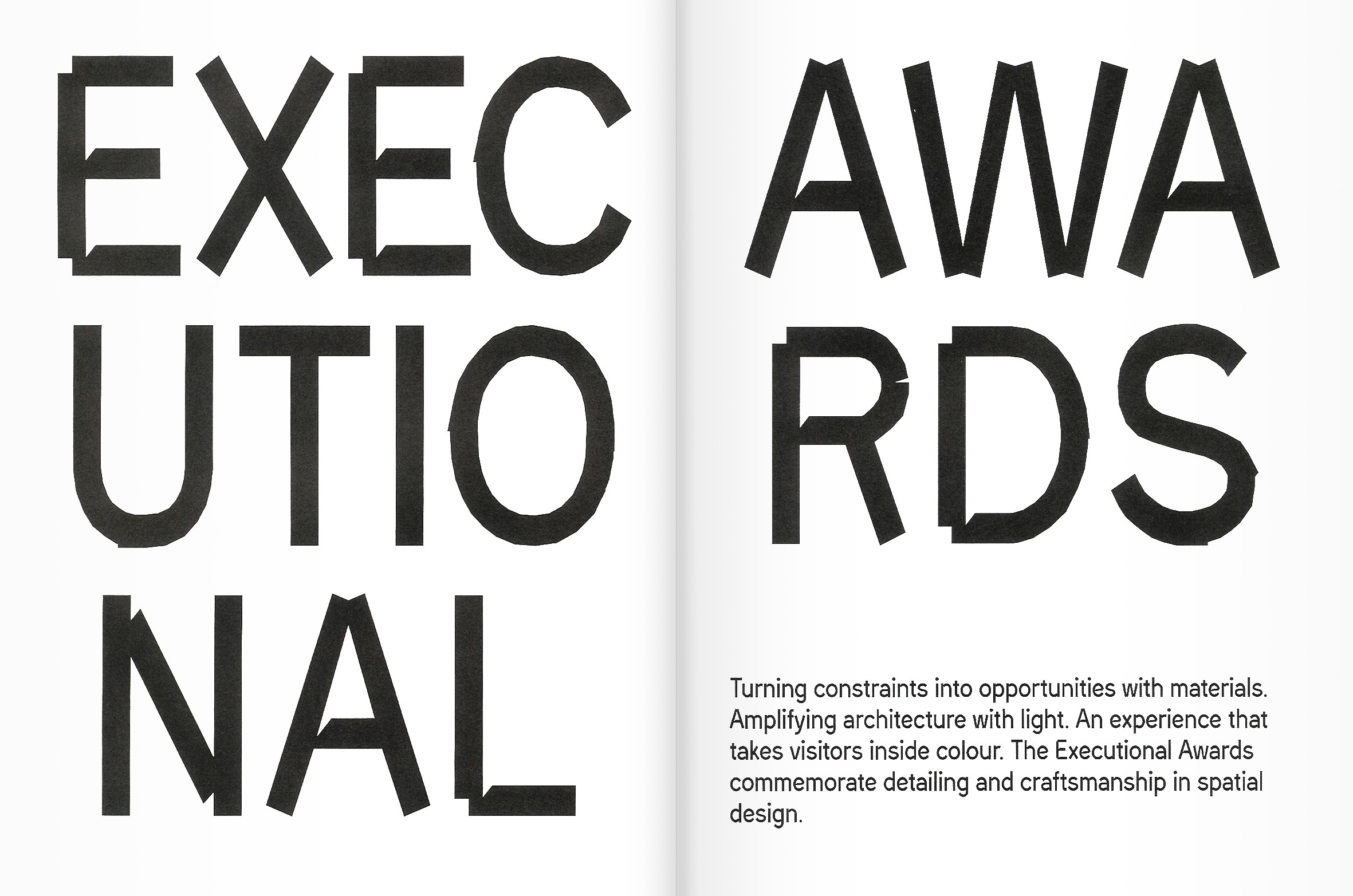
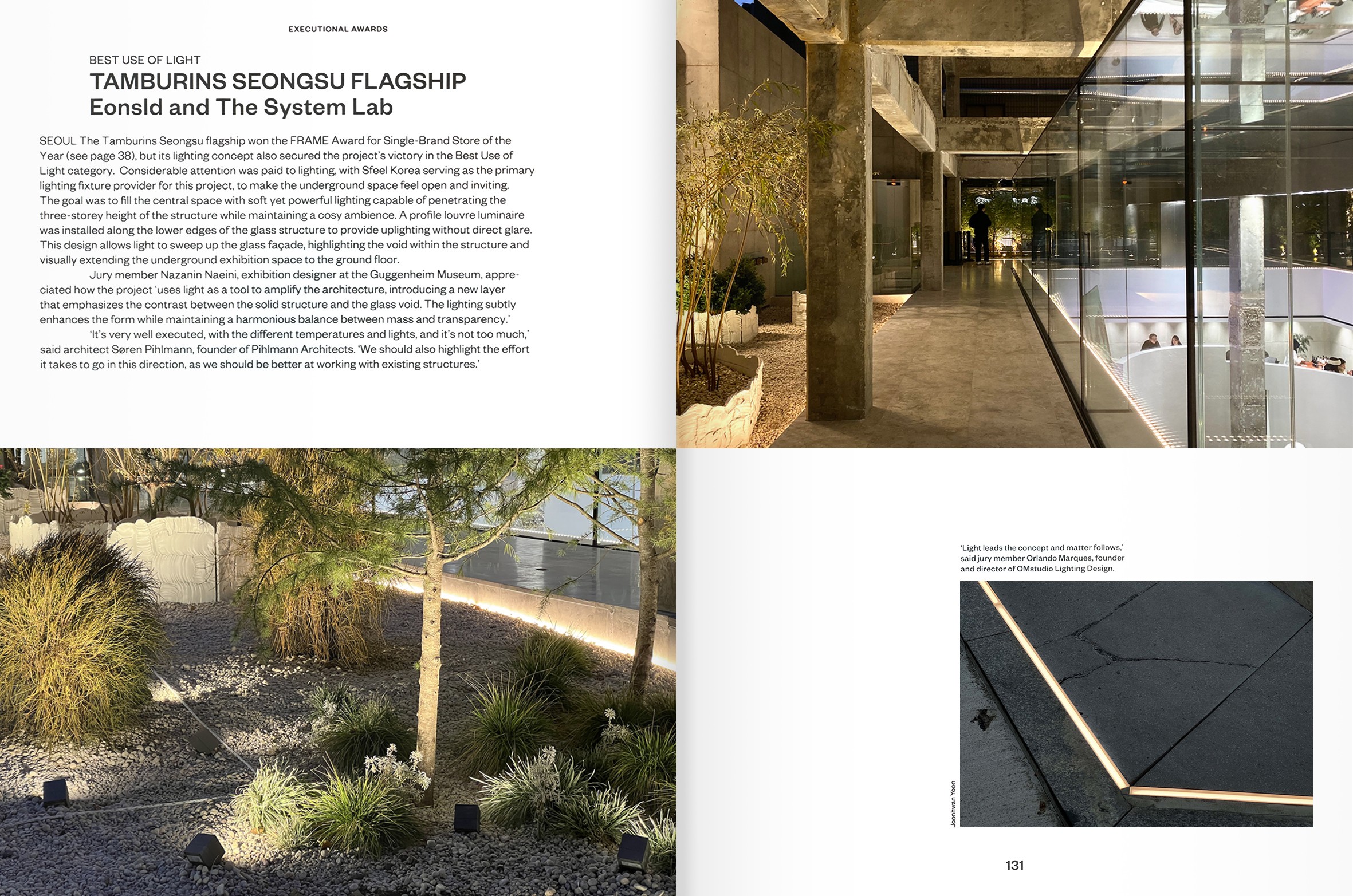
FRAME’s 2025 Special Issue is all about reflection and projection. We showcase the winners of the 2024 FRAME Awards – the projects and people that represent the best of the spatial design industry over the past year – and explore the key themes set to shape the future of retail, hospitality and workspaces. Here, we dive deeper into what’s inside.
Meet the recipients of the FRAME Honorary Awards: innovative people and players in the spatial design industry.
Get the key takeaways from our award-winning projects across the broad spectrum of spatial design – retail, hospitality, work, shows, living, institutions and interior products – including essential industry insights from our grand jury.
Delve into the evolving dynamics of consumer behaviour and retail design. Learn how brands can address the often-contradictory demands of different generations, why retail spaces must evolve into platforms for connection and learning, and how technology-enhanced experiences will further reshape sellingscapes, both on- and offline.
Explore the factors propelling hospitality forward amid rapid expansion. Read about the rise of niche interest travel, the contradiction at the heart of sustainable hospitality design, AI’s potential influence on travel experiences, and more.
Find out why the workplace of the future won’t be designed by (only) designers. Discover the importance of integrating diverse work settings, prioritizing flexibility and wellbeing, and striking a balance between community and individuality.
WORDS. Floor Kuitert
© 2025 Frame. All rights reserved.